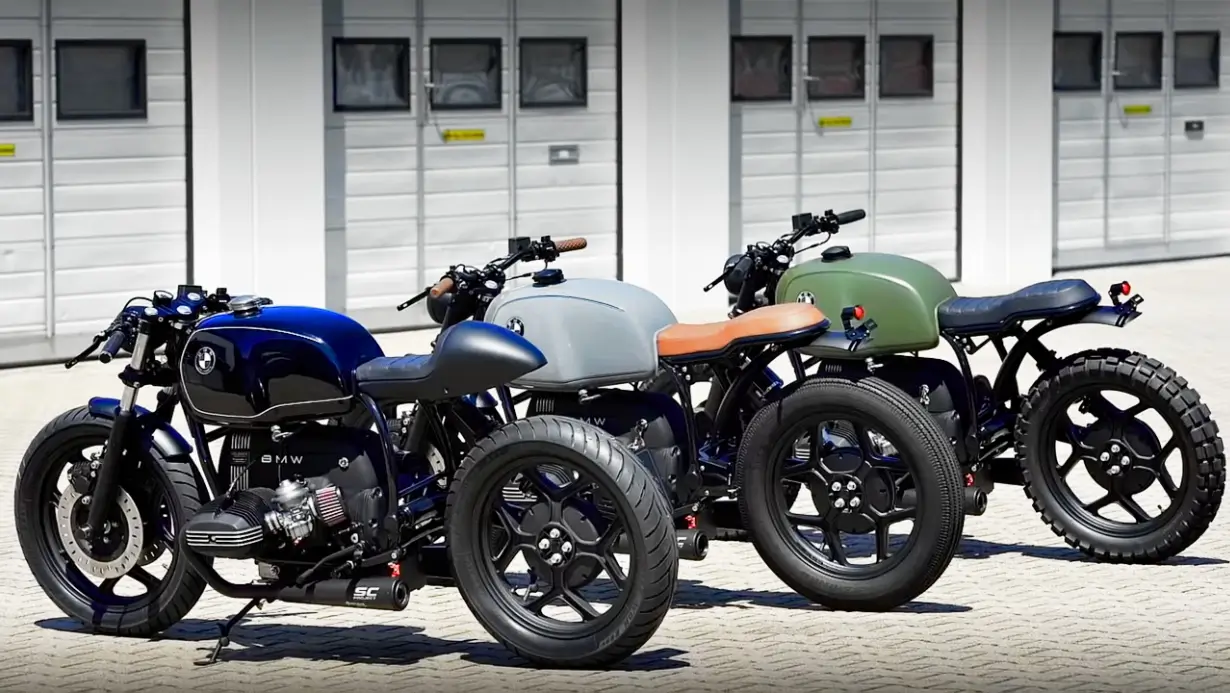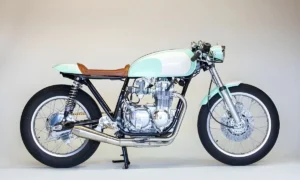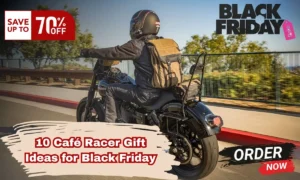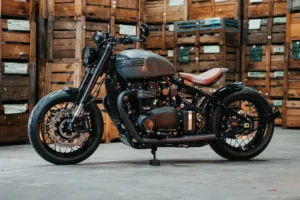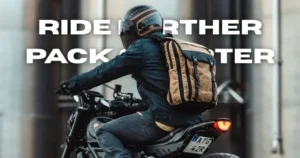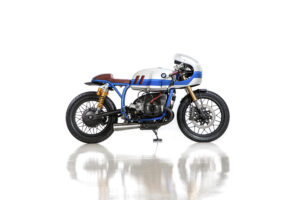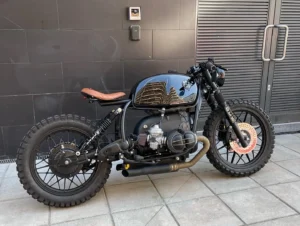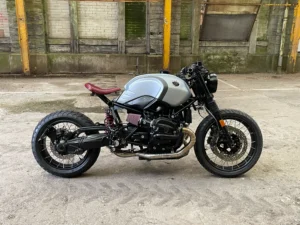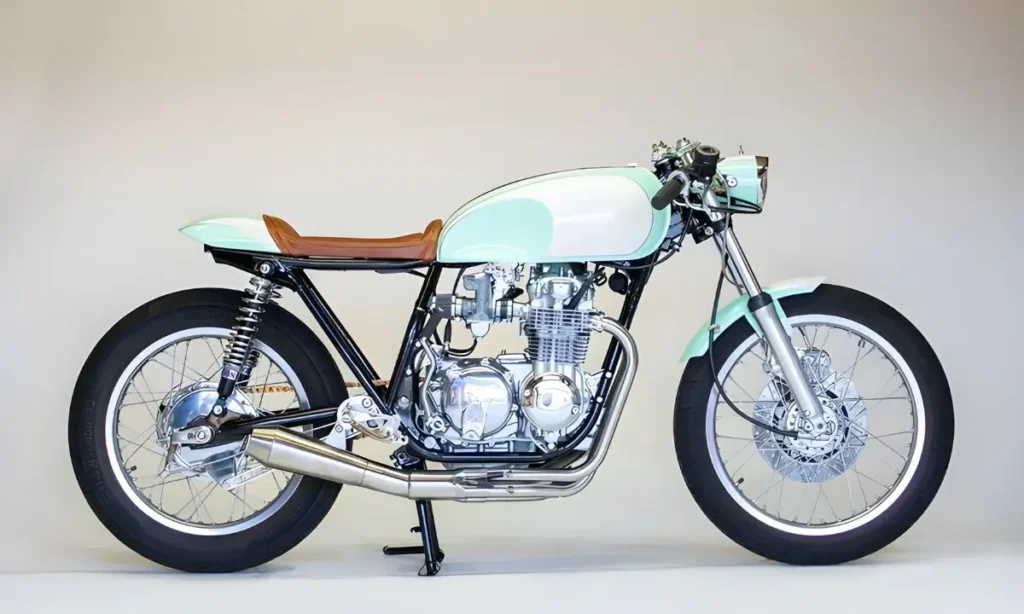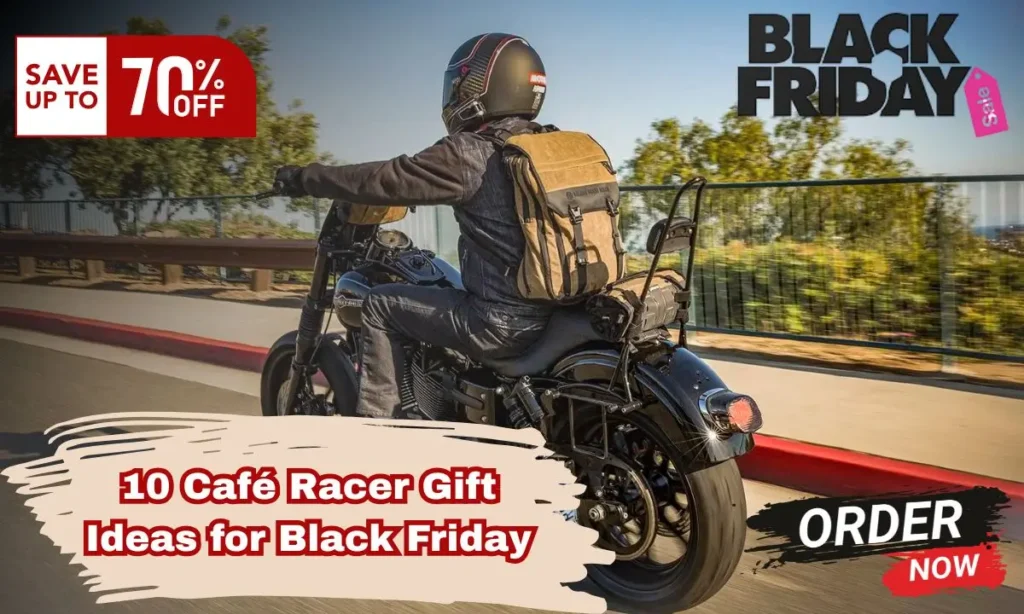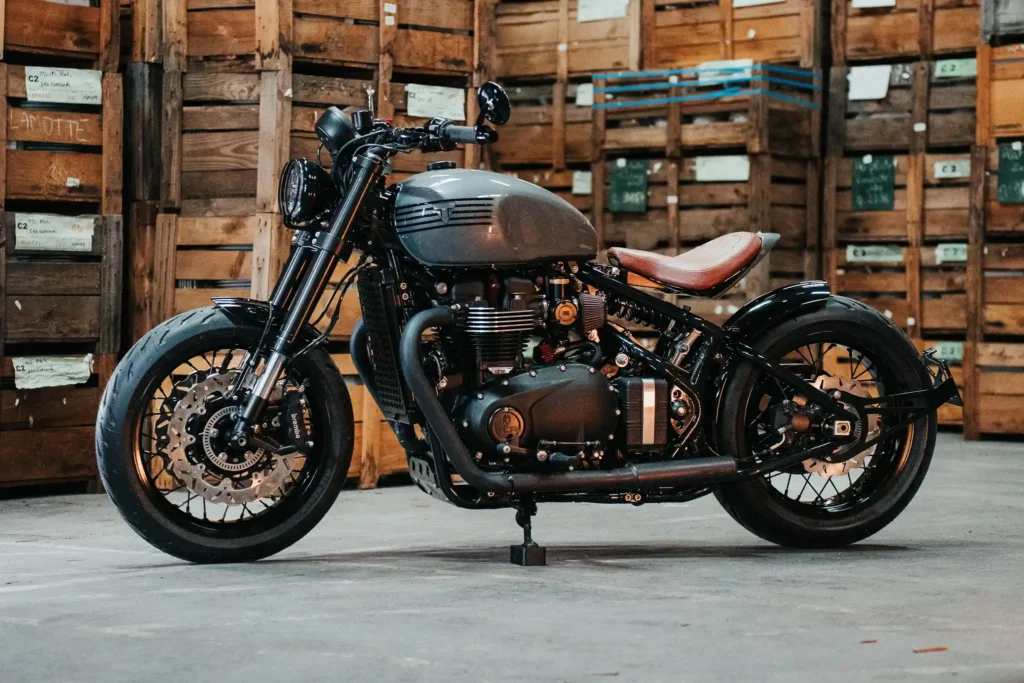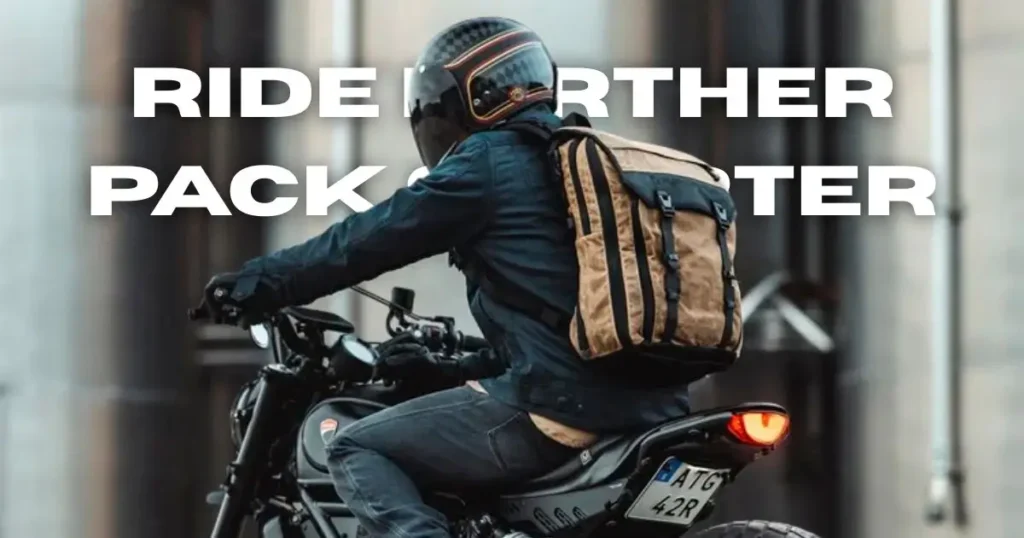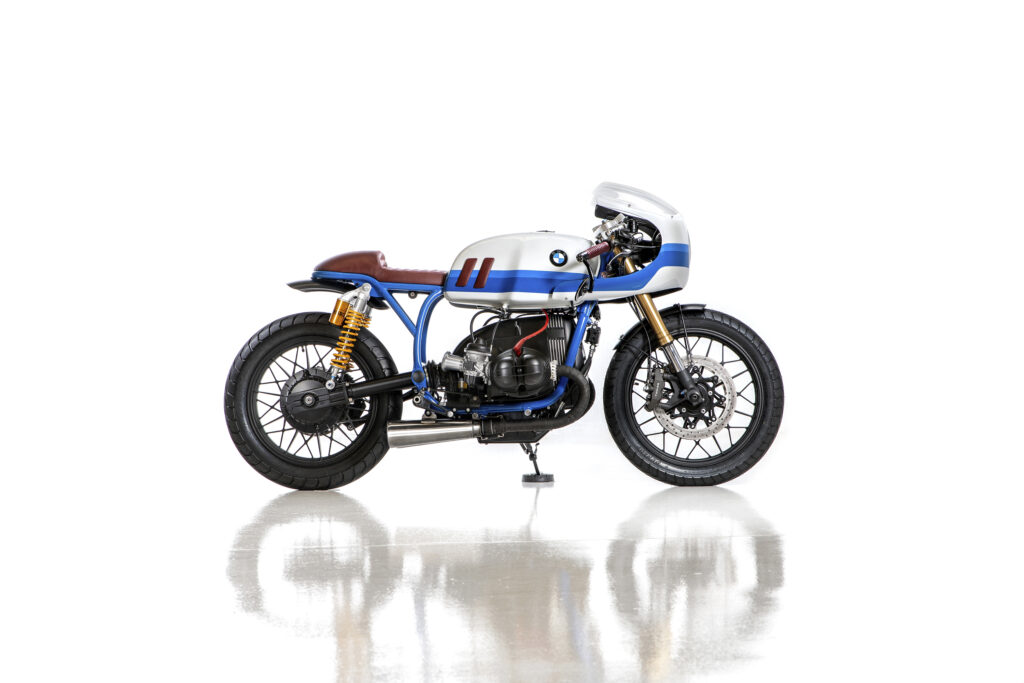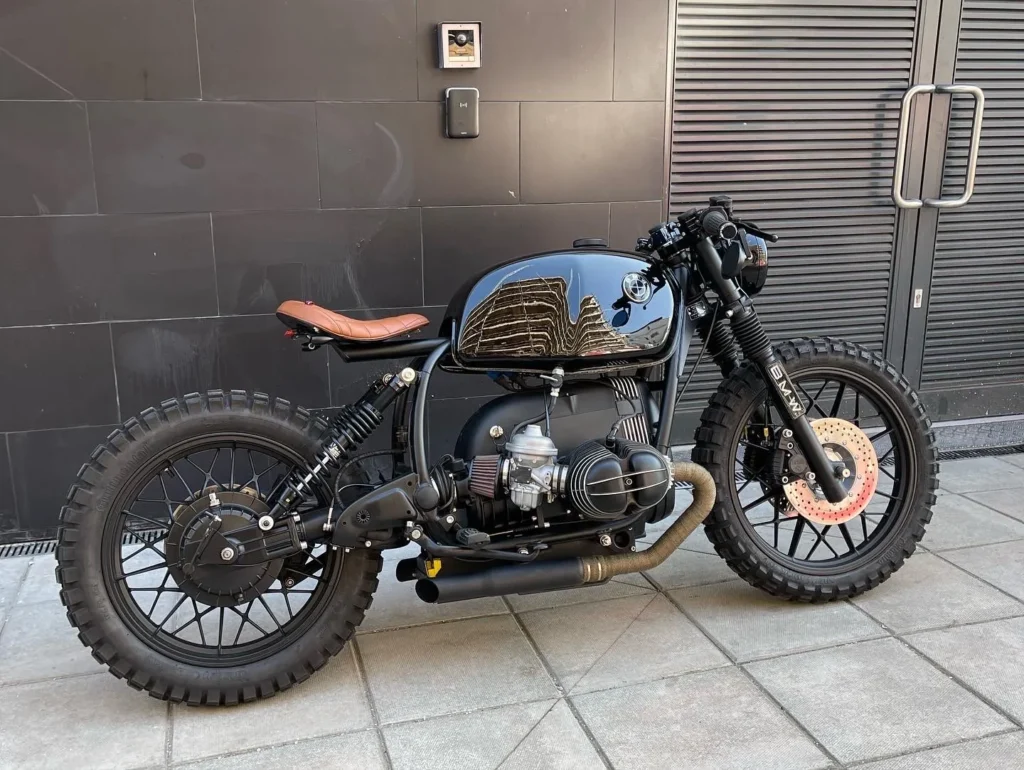Table of Contents
ToggleI remember the day I decided to start my cafe racer project. The idea of creating a custom motorcycle that combined speed, style, and personal expression was too tempting to pass up. BMW motorcycles, known for their reliability and performance, quickly became my top choice. This article is here to help you pick the perfect BMW motorcycle for your cafe racer project, based on my own experiences and what I’ve learned along the way.
What Makes a Great Cafe Racer?
Cafe racers are a type of motorcycle known for their low handlebars, single seat, and footpegs positioned towards the back. These features give the rider a sleek, aggressive stance. To enhance performance, owners often tune the engine for more power, upgrade the suspension, and improve the brakes. A big part of their charm is the vintage look, often achieved with custom paint jobs.
The design aims to reflect speed and simplicity, which means removing unnecessary parts and focusing on performance. By concentrating on these elements, not only does the bike look better, but it also performs better. Customizing a cafe racer is about both aesthetics and creating a fun ride.
Why Choose a BMW Motorcycle?
Reputation and Reliability
When I started my project, BMW motorcycles stood out to me for several reasons. BMW is known for quality and engineering excellence. Their bikes are reliable and last a long time, which is perfect for a customization project.
BMW motorcycles are built to last. The engineering and craftsmanship in each bike mean you’re starting with a solid foundation. For a cafe racer project, having a reliable base bike is crucial. It allows you to focus on the customization without worrying about constant mechanical issues. This reliability is one of the main reasons I chose a BMW for my project.
Performance and Versatility
BMW motorcycles offer impressive performance and versatility. Their powerful engines and smooth handling provide a great starting point for a cafe racer. I found that BMW models can be customized in many ways, allowing for a unique and personal build.
Another big advantage is their versatility. Whether you’re looking at the classic R-Series or the more modern K-Series, there are plenty of customization options. Each model has its strengths, from engine performance to frame design, making it easier to tailor the bike to your specific needs and vision. With BMW’s performance capabilities, you can build a cafe racer that not only looks great but also rides great.
Best BMW Models for Cafe Racer Projects
BMW R-Series
After lots of research and talking to other enthusiasts, I found the best BMW models for cafe racer projects. The BMW R-Series and K-Series are top choices.
BMW R75/5 Cafe Racer
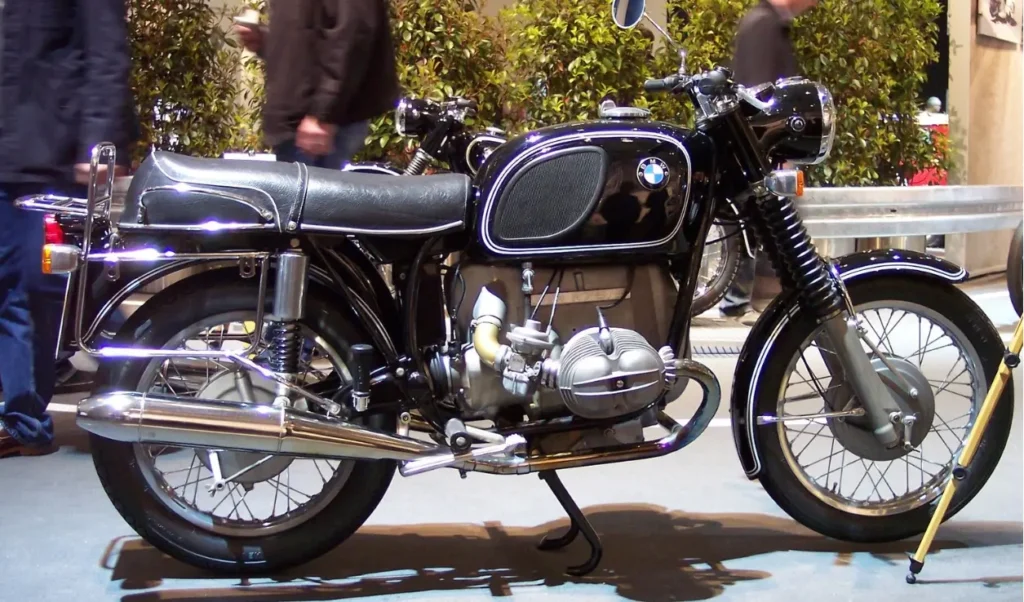
The BMW R75/5 is a classic choice for cafe racer builds. Its reliable engine and timeless design make it a favorite. The R75/5 offers a good mix of performance and vintage looks, making it a great base for customization. The air-cooled engine is durable, and the bike’s frame is easy to modify.
The R75/5 is known for its simplicity and robustness. The straightforward engine design makes it easy to work on, even for those new to motorcycle customization. Its classic lines and the availability of parts make it an ideal candidate for a cafe racer project. When I was building my R75/5, I appreciated how easy the modifications were and how well the bike responded to changes.
BMW R80 Cafe Racer
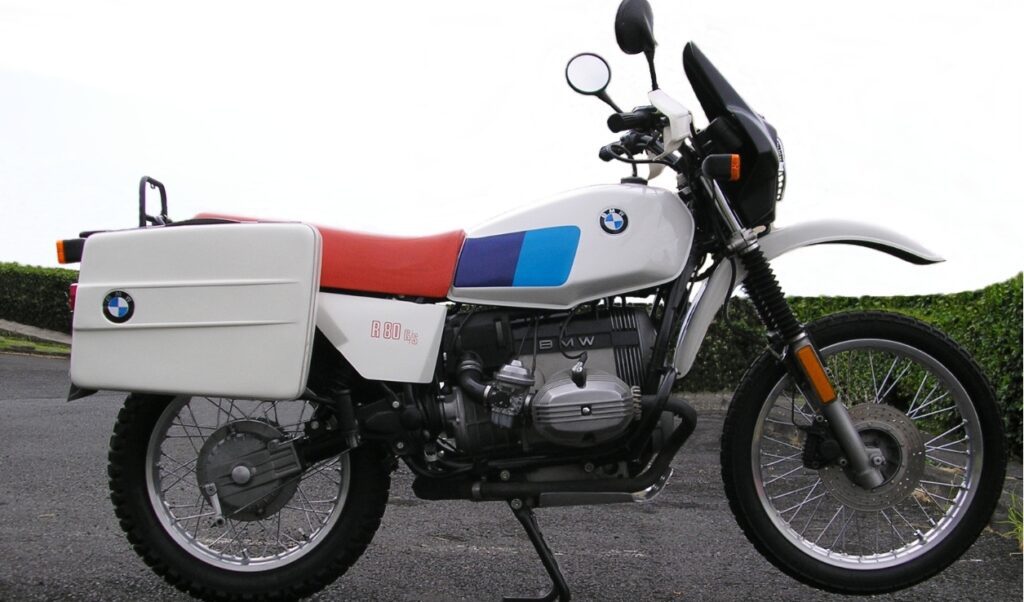
The BMW R80 is another popular model for cafe racer builds. It offers a good balance between performance and cost. The R80’s 800cc engine provides plenty of power, and its design allows for a lot of customization. Many builders appreciate the R80 for its ease of maintenance and the availability of parts.
The R80’s engine is known for being smooth and reliable, which is a big plus when you’re planning to push your bike’s performance. The bike’s design works well with various modifications, from custom seats to performance exhausts. When I worked on an R80, I found its versatility allowed me to experiment with different styles and configurations until I found the perfect setup.
BMW R90/6 Cafe Racer
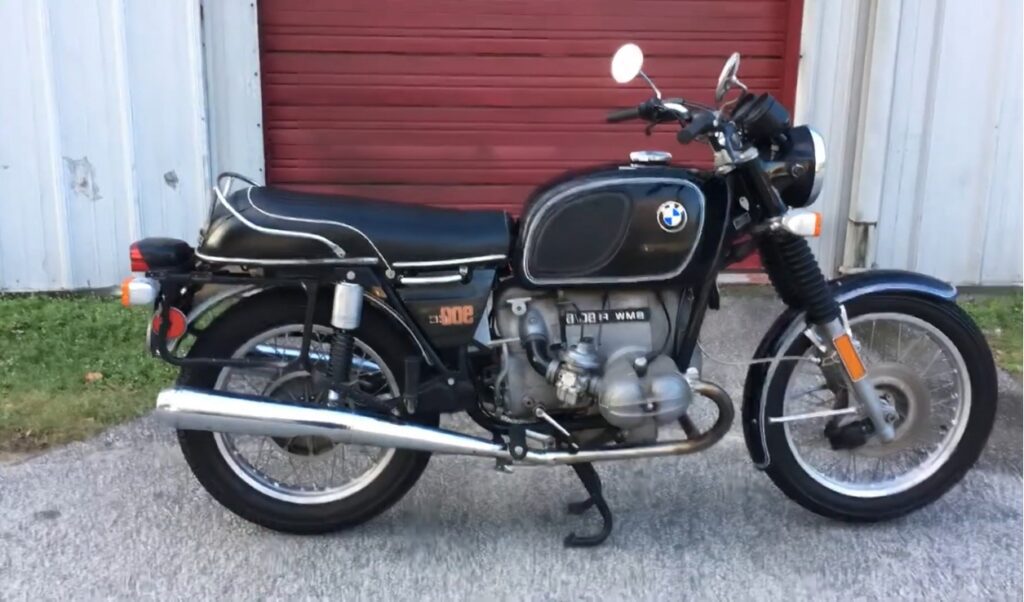
For those looking for more power, the BMW R90/6 is a great option. Its 900cc engine delivers strong performance, and the bike’s frame is well-suited for various modifications. The R90/6 is highly regarded in the cafe racer community due to its combination of power and classic style.
The R90/6 is notable for its strong performance. The larger engine gives it plenty of power, making it an exhilarating ride once customized. Its classic frame design is also popular among cafe racer builders because it retains the vintage aesthetic while allowing for modern upgrades. Working on an R90/6 was an exciting experience for me due to the potential for significant performance enhancements.
BMW R100 Cafe Racer
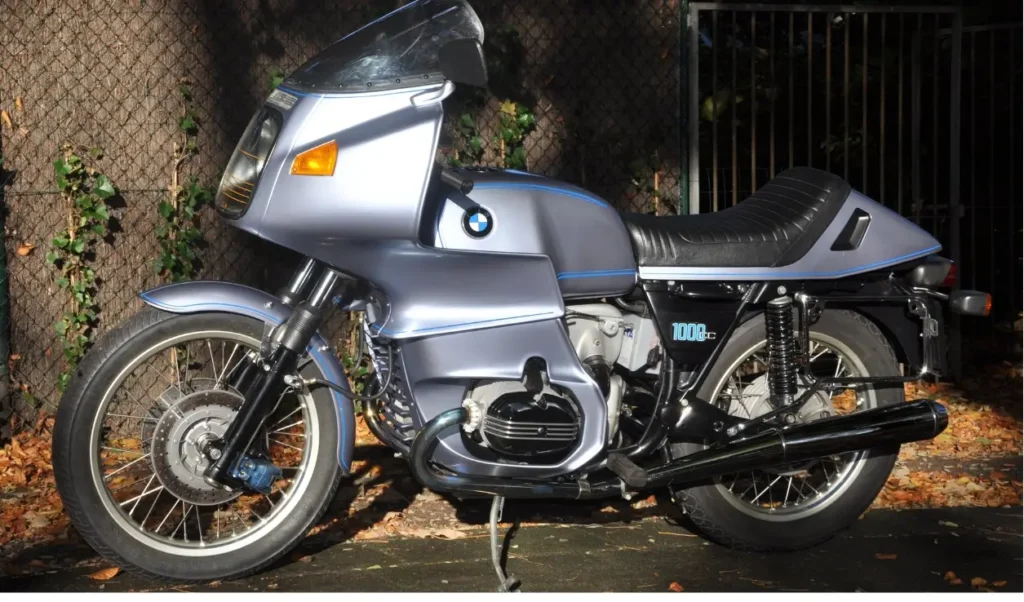
The BMW R100 is a great choice for a cafe racer project. Its powerful 1000cc engine provides excellent performance and reliability. The classic design is perfect for those who want a vintage look with plenty of power.
The R100’s engine offers an exciting ride, and the frame is easy to customize. You can focus on enhancing performance, improving aesthetics, or both. I found the R100 enjoyable to work on because it performs well and has many aftermarket parts available. Customizing an R100 combines power and style, making it ideal for cafe racer fans.
Read more : [How to Build a BMW R100 Cafe Racer]
BMW K-Series
BMW K100 Cafe Racer
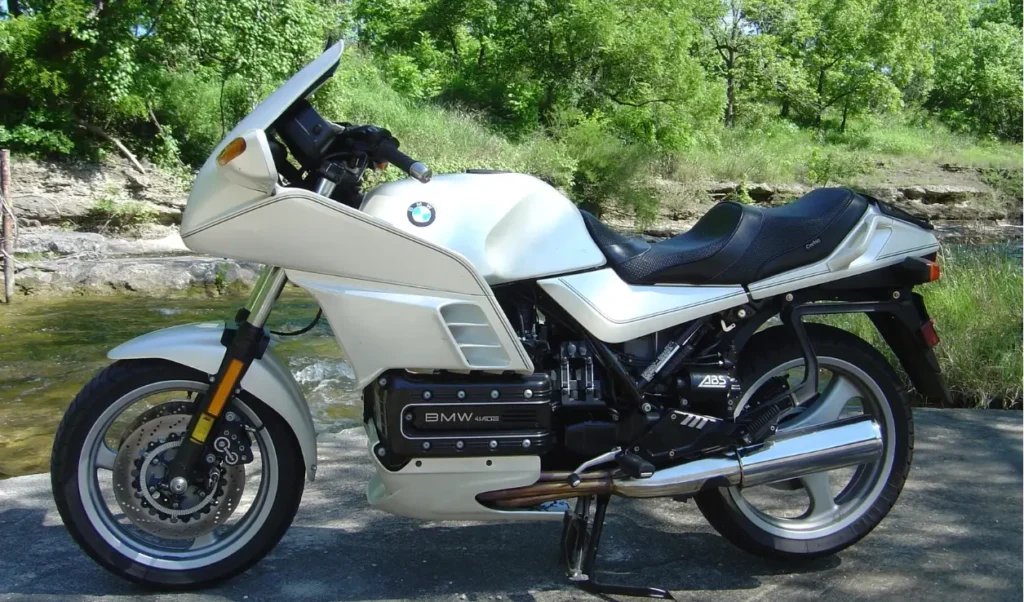
The BMW K100, often nicknamed the “Flying Brick” due to its engine design, is renowned for its durability and distinctive appearance. Its inline-four engine offers a different kind of power compared to the R-Series, making it a unique choice for cafe racer enthusiasts.
The K100’s engine layout sets it apart, giving the bike a low center of gravity that enhances its handling and stability. When I worked on a K100, I was really impressed by how well it handled after customization. Its unique look also made it stand out among other cafe racers.
For know more about BMW k100 buiding guide visite here: [BMW K100 Cafe Racer Build]
BMW K75 Cafe Racer

The BMW K75 offers a different approach to building a cafe racer, with its lighter weight and three-cylinder engine. It’s known for its smooth power delivery and balanced handling, which makes it agile and ideal for city riding.
Compared to its big brother, the K100, the K75 has its own unique advantages. Its lighter weight enhances its agility and makes it easier to handle in urban environments. The three-cylinder engine provides a smooth ride with consistent power delivery, making it enjoyable to ride.
Working on a K75 was a great experience for me because its compact design allowed for some really creative modifications.
Read more : [My BMW K75 Cafe Racer Build]
BMW K1100 Cafe Racer
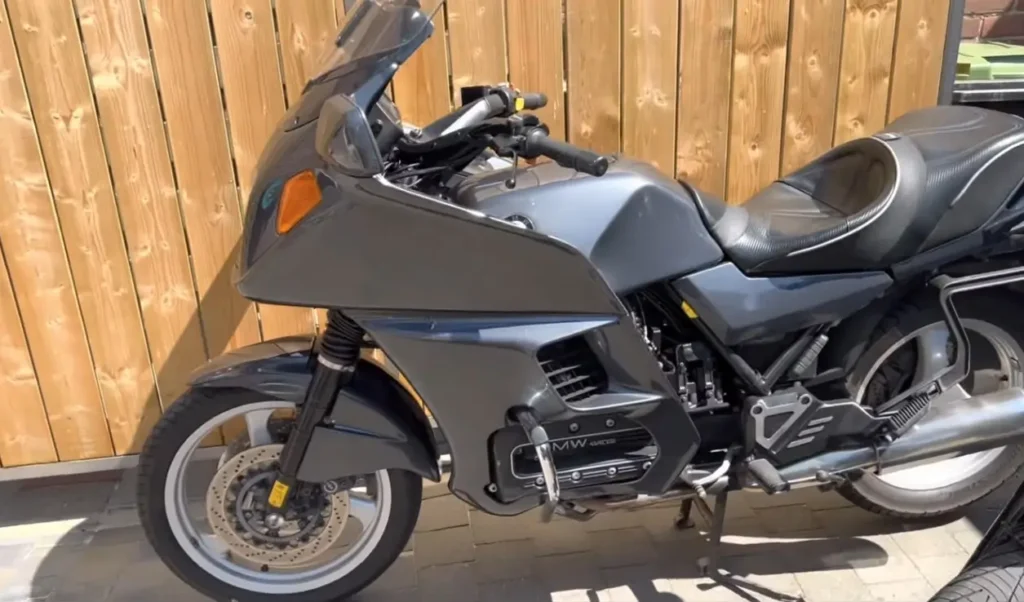
The BMW K1100 is a great choice for a cafe racer project. Its powerful 1100cc engine offers strong performance and reliability. Known as the “Flying Brick” for its unique engine layout, it has a low center of gravity, which improves stability and handling.
The K1100’s frame is easy to customize, fitting various styles from modern to vintage. When I customized a K1100, its reliability was a big plus, letting me focus on creative changes without worrying about mechanical problems.
With its mix of modern features and classic design, the BMW K1100 is a solid base for building a powerful and stylish cafe racer. Its performance and customization options make it a top pick for enthusiasts looking to create a unique and high-performing bike.
Other Notable BMW Models
While the R-Series and K-Series are popular, there are other BMW models like the R1200 and R NineT that also have their own appeal. The R NineT, in particular, stands out as a modern classic that blends vintage style with modern performance. Its design pays tribute to BMW’s classic motorcycles while integrating advanced technology, making it a versatile option for a cafe racer project.
What makes the R NineT so attractive is its blend of classic aesthetics with modern features. It offers a great starting point for building a cafe racer, combining the charm of retro looks with all the conveniences of modern bikes. Plus, there’s a wide range of aftermarket parts available, giving you plenty of options to customize and create a bike that’s truly unique.
Factors to Consider When Choosing a Model
Budget
Choosing the right model involves several factors, and setting a realistic budget is crucial. I quickly learned that costs can add up, not just for the bike itself but also for parts and customization. You need to account for the cost of the motorcycle, parts, tools, and any professional help you might need. Being realistic about your budget from the beginning can save you from costly surprises later on.
Your budget will also shape the scope of your project. A higher budget might allow for extensive engine modifications or custom paint jobs, while a more modest budget might focus on simpler, more affordable changes. Planning your budget carefully and prioritizing key modifications can help you get the most out of your investment.
Skill Level
Your skill level is a significant factor. As someone who enjoys DIY projects, I had to assess my mechanical skills and experience. If you’re new to motorcycle builds, plenty of resources are available, from forums to local workshops, to help you learn. It’s important to be honest about your abilities and know when to seek help. Starting with a simpler model can be a great way to build your skills and confidence.
For beginners, starting with a simpler, more straightforward model can help you gain the skills and confidence needed for more complex projects. There are many tutorials and guides available online that can walk you through the process step-by-step. Don’t hesitate to ask for help from more experienced builders or join a local motorcycle club for support.
Availability of Parts
The availability of parts is another critical consideration. Some BMW models have plenty of aftermarket parts available, while others might require more effort to find components. Knowing where to find parts and which suppliers to trust is essential. I spent a lot of time researching suppliers and reading reviews to ensure I was getting quality parts for my build.
Finding reliable suppliers and understanding which parts are interchangeable between models can save you time and money. Joining online forums and communities can also help you find rare parts or get recommendations for trustworthy suppliers. The more research you do upfront, the smoother your build process will be.
Intended Use
Finally, think about how you intend to use the bike. Are you building it for daily rides, occasional use, or as a show bike? Balancing performance and aesthetics to suit your needs will guide your decisions throughout the project. A bike built for daily use might prioritize reliability and comfort, while a show bike might focus more on unique styling and custom features.
If you plan to ride your cafe racer daily, focus on reliability and comfort. This might mean investing in a more comfortable seat, better suspension, or more practical handlebars. If your bike is intended for shows or occasional rides, you might prioritize unique styling or high-performance modifications. Knowing your goals for the bike will help you make the right decisions throughout the build.
Steps to Begin Your Cafe Racer Project
Research and Planning
Starting a cafe racer project can be daunting, but with the right approach, it’s incredibly rewarding. Thorough research and planning are crucial first steps. I spent countless hours reading, watching tutorials, and sketching out ideas before even touching the bike. Creating a detailed project plan and timeline helped me stay organized and focused.
Having a clear vision for my project made the process much smoother. This included deciding on the overall look I wanted, the key modifications I planned to make, and a realistic timeline for completing each stage of the build. Breaking the project down into manageable steps and setting small milestones helped keep me motivated and on track.
How Do You Find the Right Bike?
Finding the right bike is the next step. When I bought my BMW, I focused on used models in good condition. Inspecting the bike thoroughly and checking for any signs of wear or damage was crucial. Knowing what to look for and bringing a knowledgeable friend or mechanic to assist can make a big difference. Finding a solid base bike can save a lot of time and money down the road.
When searching for a used bike, pay close attention to the condition of the engine, frame, and suspension. Look for any signs of rust or damage, and make sure the bike has a clean title. If possible, take it for a test ride to assess its overall condition. Investing time in finding the right base bike will pay off in the long run.
Initial Modifications
Initial modifications often involve stripping the bike down to its basics. This means getting rid of unnecessary parts, replacing or modifying the seat, and changing the handlebars. Prioritizing changes based on their impact and cost helps keep the project manageable. I started with modifications that made the biggest difference in the bike’s look and performance.
Stripping the bike down to its essentials is one of the most satisfying parts of the project. It’s where you start to see your vision come to life. Focus on modifications that boost the bike’s performance and aesthetic appeal. Changing the seat, handlebars, and exhaust can make a huge difference in how the bike looks and feels. Be sure to document your progress with before-and-after photos to see how far you’ve come.
Engine and Performance Upgrades
One of the key aspects of a cafe racer is its performance. Upgrading the engine can significantly boost your bike’s power and speed. This might mean tuning the carburetors, installing a performance exhaust, or even rebuilding the engine. I found that focusing on the engine early in the project helped me understand the bike better and plan for additional modifications.
Improving the suspension and brakes is also crucial. Better suspension enhances the ride quality and handling, while upgraded brakes ensure you can stop quickly and safely. These performance upgrades not only make the bike more enjoyable to ride but also improve its overall safety.
Customizing the Aesthetics
A big part of the cafe racer appeal is its unique look. Customizing the aesthetics involves more than just a new paint job. It can include adding custom fenders, installing a unique headlight, or fabricating a custom fuel tank. I enjoyed experimenting with different designs and materials to create a look that was truly my own.
When customizing the aesthetics, think about the overall theme and style you want for your bike. Whether it’s a vintage look, a sleek modern design, or something completely unique, every detail should contribute to that vision. Paying attention to small details like the grips, mirrors, and even the color of the bolts can make a big difference in the final product.
Conclusion
Choosing the right BMW motorcycle for your cafe racer project involves a mix of research, personal preference, and practical considerations. By understanding the key elements of cafe racers, recognizing the strengths of BMW motorcycles, and carefully selecting the model that fits your needs, you can embark on a fulfilling and exciting journey.
From my experience, the satisfaction of building a cafe racer that not only looks good but also performs well is unmatched. I encourage you to take the first step, dive into the research, and start your project. Share your journey with the community, learn from others, and most importantly, enjoy the ride.
For more detailed guides, recommended tools, and tips, subscribe to our blog and join the thriving community of cafe racer enthusiasts. Happy building!

